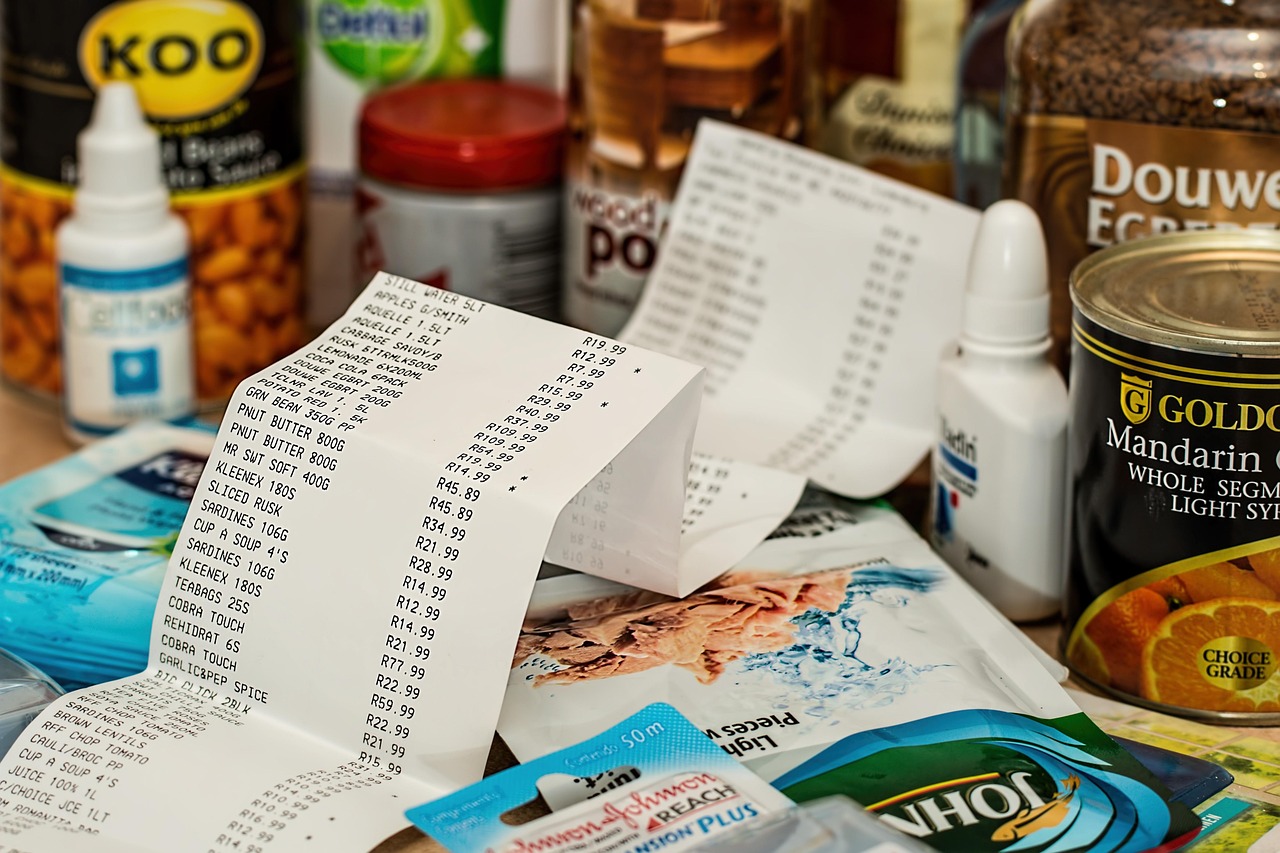Trying to save money at the grocery store isn’t just a TikTok trend—it’s a lifestyle. Frugal shoppers know how to spot markdowns, work store loyalty programs, and never leave home without a list (armed with digital coupons, of course). They scan shelves for hidden gems, skip pre-packaged foods, and snap up produce that’s fresh but not fancy. It’s all about smart swaps and knowing the difference between splurging on real flavor and stocking up on everyday basics. Let the savvy energy take over your next grocery run; you’ll feel the satisfaction when you see your total drop at checkout.
1. Know Your Prices
A price list is like your own designer cheat sheet for the grocery store. There’s a certain thrill in knowing exactly what you paid for eggs, oat milk, or that favorite bar of dark chocolate. When you walk into a different store—Trader Joe’s, Whole Foods, or even Costco—you’re armed and ready, not swept up by glossy sale tags or bold “special” stickers. With your own price notes at hand, you spot real deals and skip the fake ones. It’s smart, almost chic—think of it as having the inside scoop on your own shopping habits. Track your usuals in a note on your phone, a tiny notebook in your tote, or even a highlighted list on your fridge. This small habit saves money and keeps your style sharp every time you shop.

2. Check the Stores Sales
Before you grab your keys and head out shopping, check the store’s weekly sales online. A quick scroll can highlight markdowns on everything from produce to pantry staples, letting you spot what’s worth adding to your list. Don’t let a shiny sale sign cloud your judgment, though. Sale doesn’t always mean savings. Keep your price list close, compare as you go, and stick to your budget-friendly plan. Your wallet will thank you.
3. Use Grocery Saving Apps
Stretching your budget starts with a sharp eye for weekly sales. If ground beef gets a price drop, let it headline your menu—think classic tacos, sturdy meatballs, or a rich Bolognese. When cabbage hits its moment in the produce aisle, bring it to the center stage: pair wedges with tangy vinaigrette, toss strips into stir-fry, or swap in a crunchy slaw. Let the sales dictate your lineup. You still get variety, just tuned to the rhythm of the season and store. The result? More variety in your meals, less strain on your wallet.
If you spot a product you use regularly at half price, it makes sense to grab a few extra if your budget allows. Not long ago, my local grocery store ran a sale on sausage—half off the usual price. I picked up six packs and put five in the freezer (it’s a staple in our house, so I know they’ll get used in the next month or so). Freezing extra portions when you find a deal like this can help stretch your grocery budget without much effort. Just check your freezer space first. If it fits, you’ll thank yourself later when prices go back up and you have a quick meal ready to go.

4. Take Full Advantage of Loyalty Card Benefits
Grocery store loyalty cards give you more than just the sale price on your favorite snacks or pantry staples. Many programs let you collect points with every trip, and those points often turn into rewards you can actually use (free items, discounts, or dollars off your bill). Some stores set up digital coupons tailored to what you usually buy, so you skip the hassle of hunting for deals in the weekly flyer. I’ve watched my own points add up quickly, leading to free coffee or discounts on last-minute dinner ingredients—a small but welcome surprise during checkout. The smartest move? Take a good look at what perks your store offers and use them. You’ll get more than you expect from a card that just sits in your wallet.
5. Use Rain Checks
Nothing takes the wind out of your sails like planning to snag a deal, only to see “sold out” taped over the sale sign. Grocery stores know how frustrating that feels—so most offer rain checks at the customer service counter for items that disappear from shelves during the sale week. Just ask for one. With a rain check in your wallet, you lock in that sale price for another week or two (depending on the store’s rules), and you don’t leave empty-handed. I’ve used this trick a few times when I ran into an empty freezer case during a big frozen food sale, and it really helps—especially if you’re shopping on a tight budget or planning meals in advance. It’s a simple step that saves money without extra effort. Keep an eye out for rain check policies next time a deal slips through your fingers.

6. Watch the Unit Price
Most grocery stores help out by listing the unit price (like cost per ounce or per pound) on the price tag, usually in small print below the main price. Once you spot it, comparing the real value between brands gets a lot easier. That little number has saved me from overpaying on everything from laundry soap to peanut butter—sometimes it’s surprising how much prices differ. Next time you shop, take a second to check it. You’ll notice the savings add up fast.
7. Understand Sales Cycles
Grocery stores work on a sales cycle that repeats every 6 to 8 weeks. Once you spot the pattern, it gets easier to plan how much to buy when your go-to items go on sale. It’s not just short-term savings, either. Most stores also follow a longer, yearly cycle. Take March, for instance: frozen foods take center stage, with deals everywhere you look. Come November and December, baking supplies go on sale, making it a smart time to load up on flour, sugar, and chocolate chips. I still remember a year when chocolate chips hit rock-bottom prices around Thanksgiving. Since I had extra room in my pantry and a little wiggle space in my grocery budget, I stocked up for the next six months—which meant fresh cookies on hand well after the holidays were over. (It felt like a win every time I reached for those bags.) If you pay attention to these cycles, you can buy at the right time and watch your savings add up.

8. Buy More Frozen Produce
Frozen fruit and vegetables are often much cheaper than their fresh counterparts. Even better, they don’t lose their nutritional value in the process. According to registered dietitian Tamara Melton, “Freezing locks in vitamins and minerals, so you get almost the same benefits you’d expect from fresh.” I’ve bought bags of broccoli, mango, and spinach for a fraction of the price I’d pay at the regular produce stand. I never have to stress about throwing out wilted greens or bruised berries. (If you’ve ever opened your fridge to find a sad, mushy cucumber, you know the feeling.) Just scoop out what you need, seal the bag, and put it back. It’s an easy way to cut food waste, and your meals still taste great.
9. Avoid Pre-Cut, Pre-Washed
Frugal shoppers spot the extra cost right away—anything pre-cut, pre-washed, or pre-prepped often comes with a higher price. Sliced cheese, bagged lettuce, or ready-to-eat carrot sticks seem like small luxuries, but the price per ounce can double compared to whole, unprocessed options. Grocery experts back this up; Consumer Reports notes that buying whole vegetables and cutting them yourself keeps more money in your wallet. I’ve noticed the same in weekly budgets—choosing the simple head of lettuce over the washed mix saves a few dollars each trip (and it usually tastes fresher). If you have the time and don’t mind a little extra chopping and rinsing, making that swap adds up fast. Of course, if convenience outweighs cost in your current season of life, it’s still a fair trade-off. For anyone hoping to stretch their grocery budget, though, this is a quick and easy place to start.
10. Buy Store Brands
I’m a big supporter of store brands. Most days, I pick up the generic version without a second thought. For basics like canned beans, rice, or pasta, I rarely notice any difference in taste or texture compared to the big-name labels. Even when I do, the gap is so minor that I don’t care enough to pay the extra dollar or two (those savings add up if you shop with this habit). A nutritionist once told me many of these products come from the same factories, just with different names on the box. I can see how some shoppers might stick with a favorite brand out of habit, but if you’re looking to trim your grocery bill, shifting to store brands makes a lot of sense.
11. Make the Most of Markdowns
Keep an eye out for those bright yellow tags during your trips to the store. These tags usually mean deep discounts because the items are close to their sell-by date, though sometimes it’s just the store clearing space for new stock. Either way, yellow tag deals are a simple way to stretch your grocery budget. I’ve found prime cuts of steak for half price and even snagged high-end yogurt I wouldn’t buy full price. If you plan to use or freeze it soon, there’s little downside (just check the packaging for any odd smells or leaks). Over time, grabbing these markdowns adds up to noticeable savings without much extra effort.

12. Consider Grocery Store Pickup
With more stores rolling out free grocery pickup, including Walmart, it’s getting much easier to fit this option into your weekly routine. I’ve found that ordering online helps me avoid those last-minute snacks and unnecessary splurges—when you’re not walking past end-caps of cookies, you’re less tempted to toss them in the cart. Watching your total add up as you go also makes it simple to see where your money is going, so sticking to a budget feels almost automatic. Experts like registered dietitian Keri Gans say curbside pickup can help shoppers follow their lists and healthier habits (since you’re not distracted by in-store displays). In my experience, these small changes add up, both for your wallet and your peace of mind.











